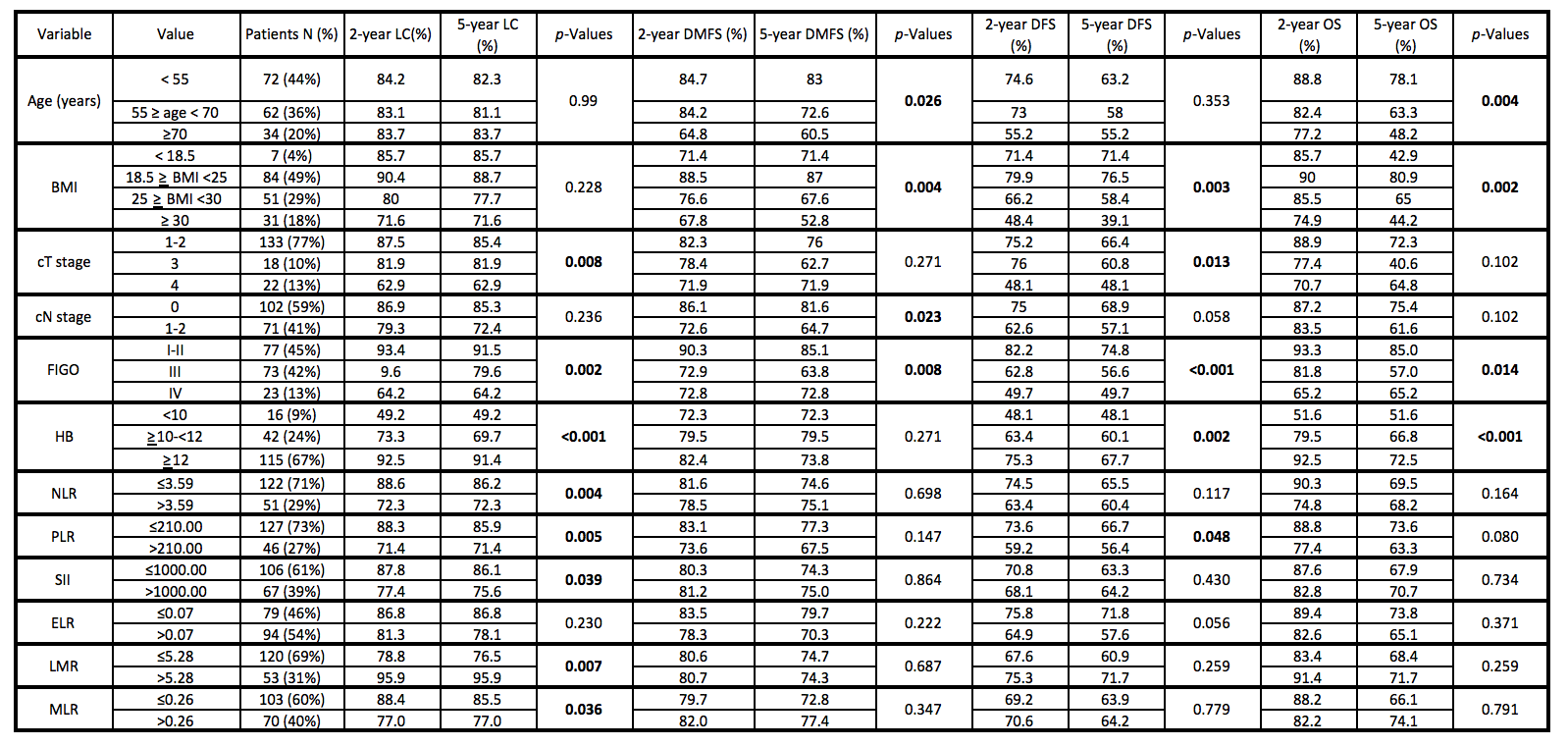One hundred and seventy three patients were included in this analysis. The results of the univariate analysis are shown in Table 1. On univariate analysis no index of systemic inflammation was significantly correlated with DMFS, DFS, and OS, while a significant correlation with better OS rates was observed for patients with physiological BMI values, with less advanced FIGO stage, and with higher hemoglobin levels. Instead, on univariate analysis, NLR, PLR, SII, LMR, and MLR were significantly correlated to LC. However, on multivariate analysis, higher LC rates were significantly correlated only to higher hemoglobin levels (HR 0.57; 95% CI: 0.46-0.71, p<0.001).
Table I: Univariate analysis of overall survival, disease free survival, local control, and distant metastasis-free survival.

BMI: body mass index, cT stage: clinical tumor stage, cN stage: clinical nodal stage, International Federation of Gynecology and Obstetrics (FIGO) HB: hemoglobin. Statistically significant p-values are shown in bold